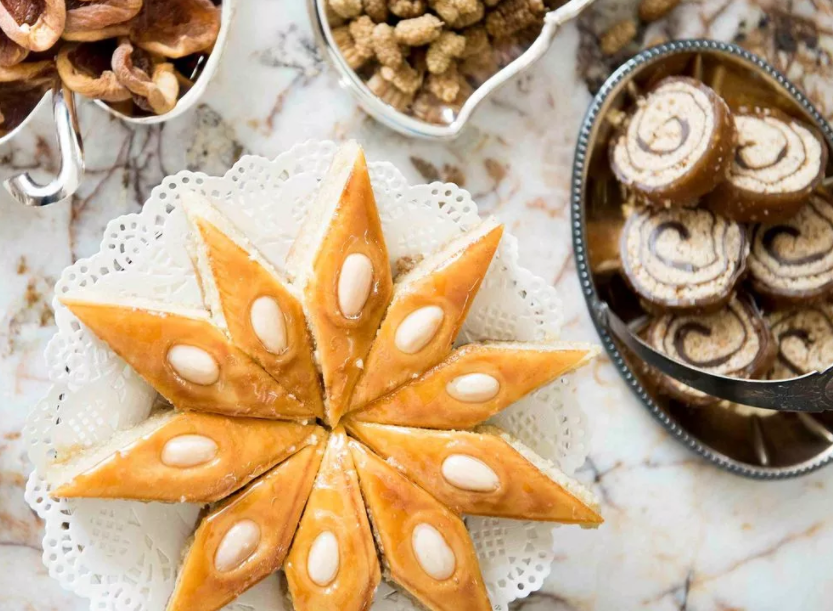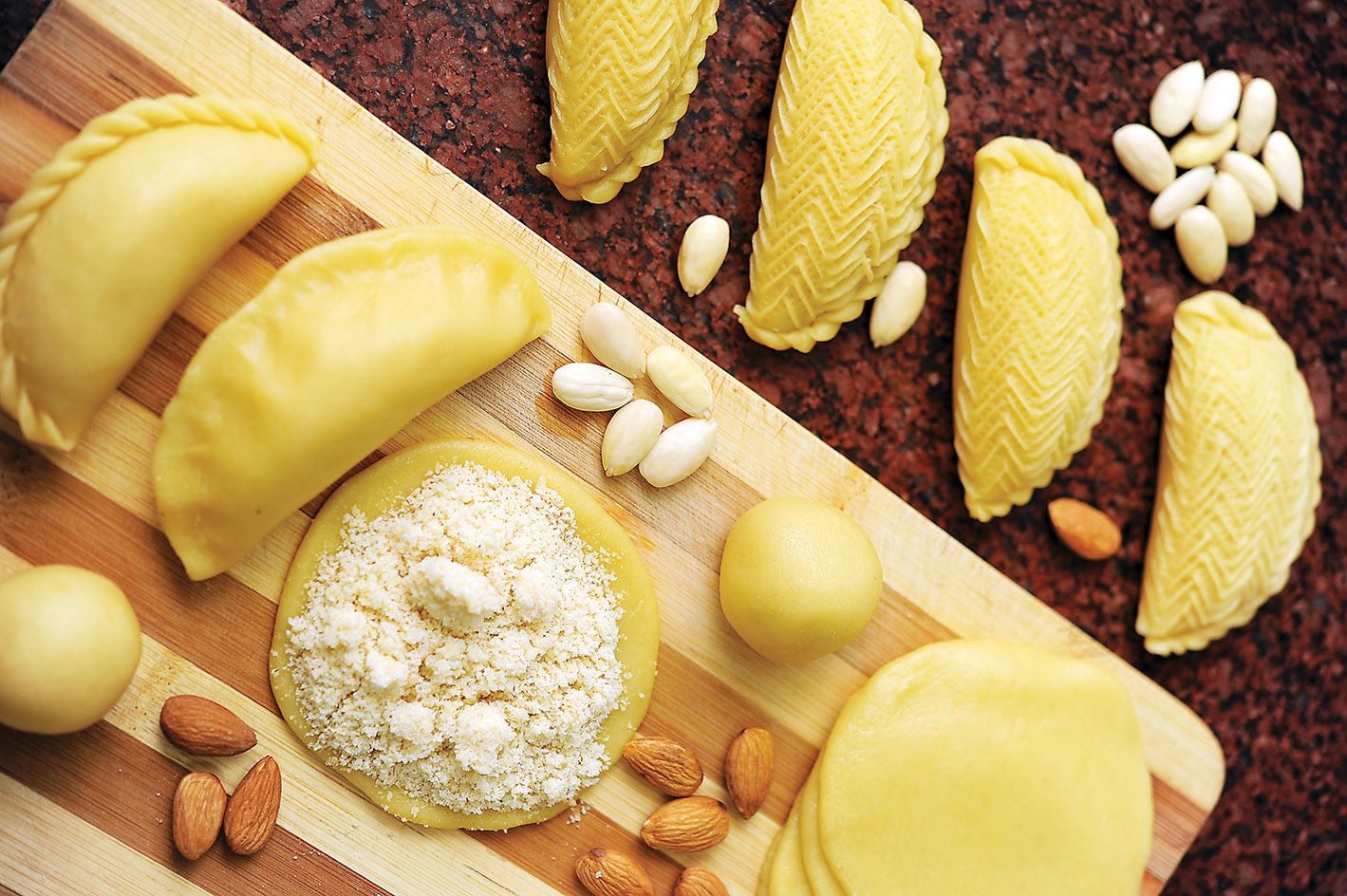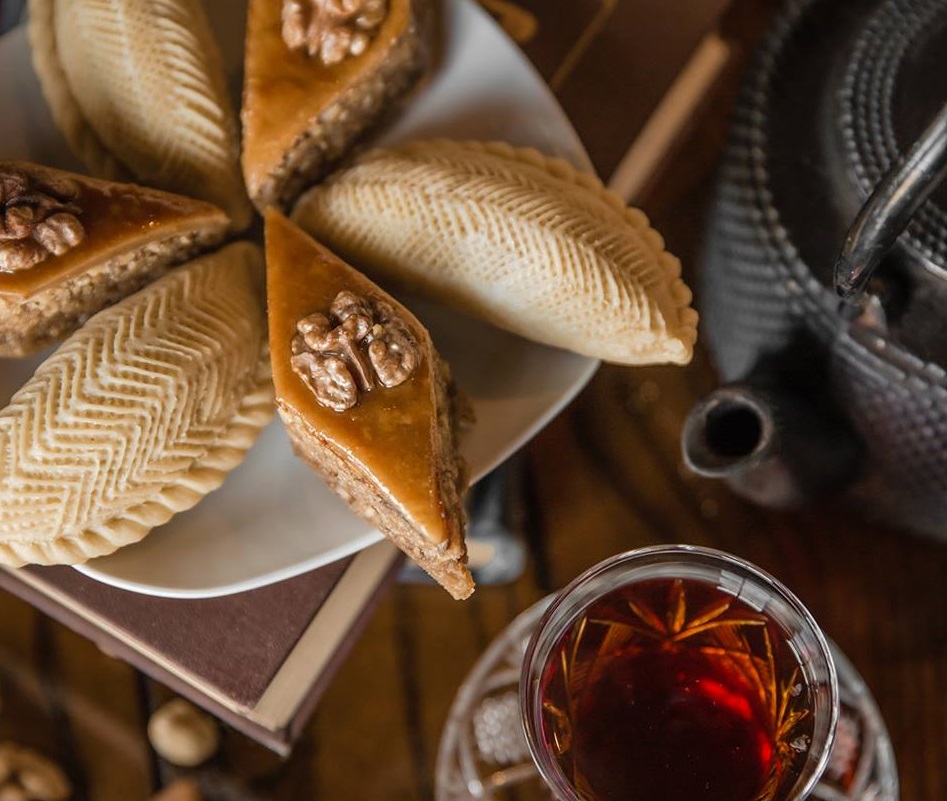With about three weeks left before the Novruz holiday begins, women of the Caspian region are getting ready to welcome the start of spring by pandering to peoples’ sweet tooth and love for desserts.
Pakhlava, shakarbura, and gogal – all classic Azerbaijani pastries – are irresistible at any Novruz gathering. They are normally served with black tea in the traditional pear-shaped glass known throughout the region and better known as an armudu.
While Novruz is officially celebrated this year on Tuesday, March 20 – the date of the vernal equinox, when the sun crosses the celestial equator and equalizes night and day, marking the start of spring – celebrations are expected to continue throughout the week.
If you are traveling to Azerbaijan in March, then brace yourself for massive festivities featuring a series of concerts, bonfires, singing and dancing to the accompaniment of musical instruments – and, of course, tons of pastries!
PAKHLAVA
“Do you know where to try pakhlava? In Ganja, in Baku, and in Guba, [which is] in the north of Azerbaijan,” Stalik Khankishiev, a celebrity chef, photographer, and cooking writer wrote on his LiveJournal account.
Every region of Azerbaijan – a country with a big heart that stretched along the western shoreline of the Caspian Sea – has its own recipe for preparing this national favorite. The northern region of Sheki, for example, makes it square-shaped, while in Gabala – also in the north – it comes as a triangle, known as uchgulag or “three ears” in Azerbaijani.
Its most classical form, however, can be found in Azerbaijan’s capital city Baku, where it’s made in the shape of a diamond, meant to symbolizes a star, and is made of about 10 layers of filo pastry filled with chopped nuts, cardamom, and cinnamon that gets sweetened with syrup or honey. Each piece of pakhlava is decorated with a nut placed in the center of the star.

GOGAL
To get the full taste of gogal, one must eat it with a cup of sweetened tea, because unlike the other two pastries on this list, gogal is not on its own sweet. These small round-shaped buns, which symbolize the sun, are made of puff pastry filled with a special blend of salt and pounded seeds of fennel, cumin, and turmeric.
To make the buns, the dough is cut into long strips, which are then twisted into a roll. Then, the filling is laid out in a notch made in the middle of this roll, while the top of the gogal is usually sprinkled with sesame seeds.

SHAKARBURA
The name shakarbura comes from the Turkic word shakar borak, which means “a sweet patty.” Because it does not spoil over long periods, shakarbura was a ‘must bring’ for any camper or hiker setting out on month-long voyages. Considered a hearty pastry, even the sharpest feelings of hunger are overcome with eating shakarbura.
Again, shakarbura differs from region to region – for example, in the northern Zaqatala, which is a home to the largest hazelnut fields in Azerbaijan, you will be served small patties known as findig chorak or “nut bread.”
Classical shakarbura is made in the shape of a crescent, which is no coincidence since the pastry is popular during the lunar waxing and waning as a new moon – and new month – emerges. It is made of yeast dough filled with chopped nuts and pounded cardamom, which gives the pastry a special flavor and aroma. Before putting shakarbura into the oven, a pattern displaying ears of wheat is drawn on its top surface using maggash, a special device in the form of small forceps.








 Russian Foreign Minister Sergei Lavrov has reasserted that Moscow has no intentions to stop the fighting in Ukraine, even if peace talks commence.
Russian Foreign Minister Sergei Lavrov has reasserted that Moscow has no intentions to stop the fighting in Ukraine, even if peace talks commence.
 Iran’s Foreign Minister, Hossein Amir-Abdollahian, has labeled a foiled Israeli drone attack in certain parts of the country as a "failure" for Isr...
Iran’s Foreign Minister, Hossein Amir-Abdollahian, has labeled a foiled Israeli drone attack in certain parts of the country as a "failure" for Isr...
 Iran has refuted reports of alleged damage to Shimon Peres Negev Nuclear Research Centre located southeast of Dimona, Israel, during the recent air...
Iran has refuted reports of alleged damage to Shimon Peres Negev Nuclear Research Centre located southeast of Dimona, Israel, during the recent air...



